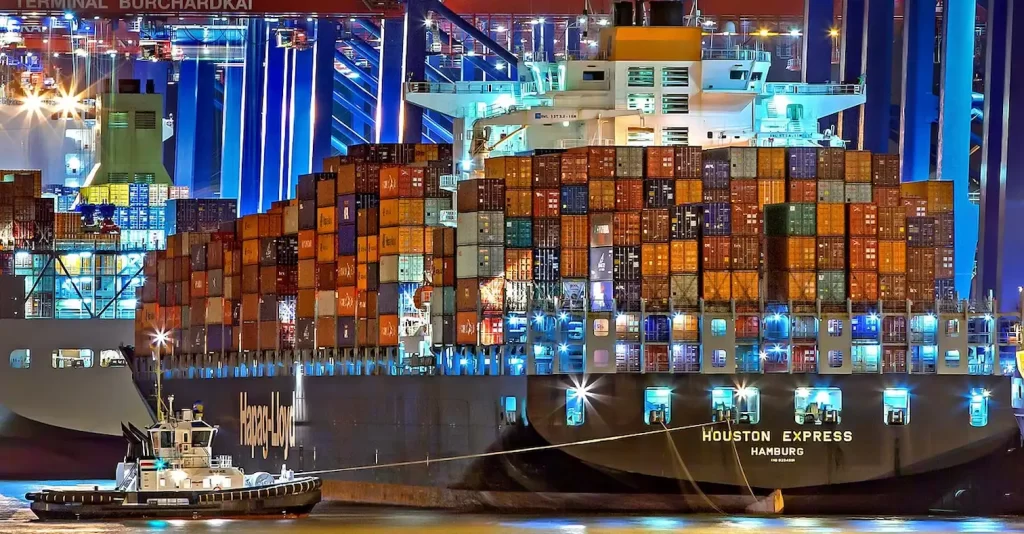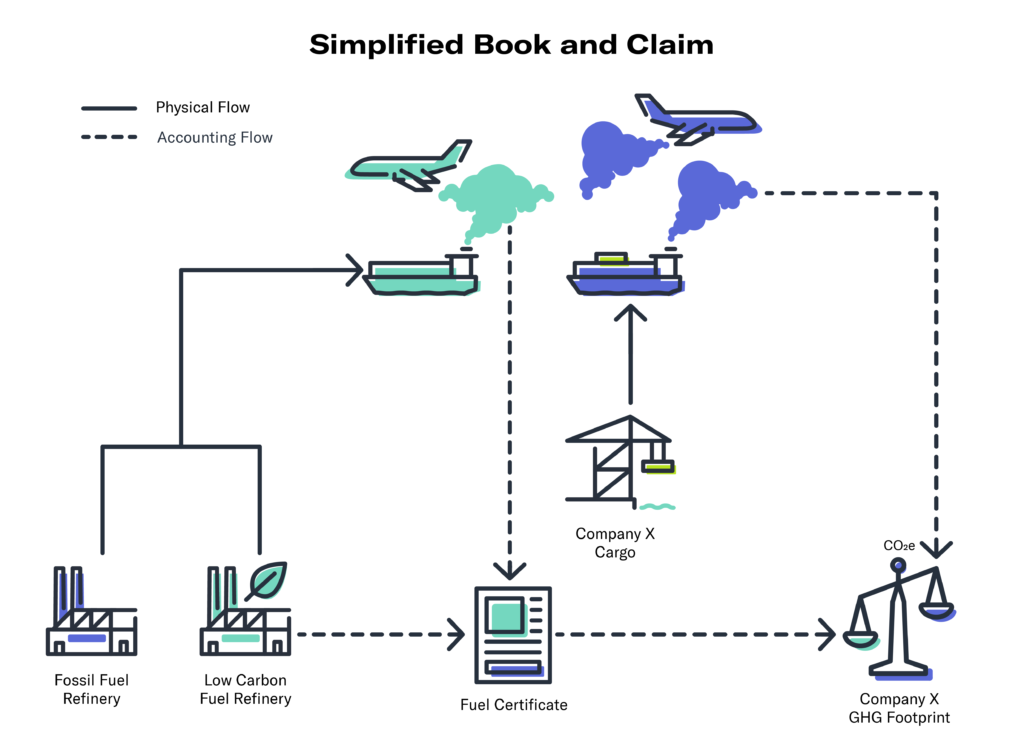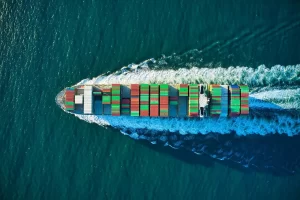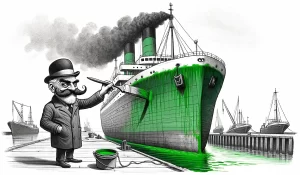Peanut butter needs jelly, Spongebob needs Patrick, Batman needs Robin, and transportation decarbonization needs low-emission fuels. Biofuels, methanol, ammonia, and hydrogen could help slash shipping emissions, if produced in the right way. But these fuels aren’t yet widely used and have an uphill battle replacing heavy fuel oil. Low-emission fuels need book and claim to accelerate uptake.
Book and claim is a chain-of-custody model. It’s been used by the electricity sector for renewable energy for decades so let’s start there to understand the mechanics.
Book and claim for Renewable Electricity
Say you want renewable energy to power your factory to lower your emissions footprint. You could either build your own power generation system, or you could buy the electricity from someone else. Money is tight and you can’t afford building your own system, so you buy the clean electricity instead. Like most businesses your factory pulls power from the regional electrical grid. The grid is powered by several power generation sources, some of which are renewable, others use fossil fuel. Once electricity is on the grid, it’s impossible to distinguish clean from dirty. If you want to claim that your factory is powered by renewable energy, how do you ensure electricity you’re buying is from a renewable energy resource like solar, wind, waves, or tides?
In the United States a Renewable Energy Credit (REC) is generated, or booked, when one megawatt-hour of electricity is generated from a renewable energy source and delivered to the electrical grid. The REC is a legal instrument that can be sold or traded by the producer. A REC entitles the owner to the non-power attributes of the renewable electricity generated. So long as the clean electricity is produced and delivered to the grid, it doesn’t matter who ‘uses’ it, the benefit at the grid level is the same. If you buy a REC for your factory’s electricity, you can claim that your electricity comes from renewables even though your physical electricity may not.
Book and claim in Transportation
Companies that move their freight aboard ships (cargo owners) often want it transported with the least emissions possible to minimize their greenhouse gas (GHG) footprints. For a cargo owner, emissions from freight are often categorized as Scope 3 emissions under the Greenhouse Gas Protocol. Scope 3 is the most difficult to reduce because these are emissions produced by other companies (like vessel operators) that are part of the cargo owner’s supply chain, but not under the cargo owner’s direct control.
Outside of energy efficiency improvements, one of the best ways to lower a ship’s emissions is through low-emission fuels. But as of right now such fuels are used by less than 1% of ships in the global fleet. If a cargo owner wanted their cargo on a ship using a low-emission fuel they would have to find one of the very few ships operating, and hope that it is moving between the right ports at the right time for their shipment. Sadly it’s incredibly rare for these elements to align right now.
Book and claim for marine transportation fuels helps side-step these challenges. When a low-emission fuel is produced and consumed in the maritime sector a certificate can be booked that tracks the fuel’s journey from refinery to a vessel’s fuel tank. That certificate can be bought and sold, just like a REC.

When a cargo owner purchases a low-emission fuel certificate, it entitles them to the emissions reductions relative to heavy fuel oil which would have otherwise been used. These certificate emissions can be accounted as reductions on the cargo owners Scope 3 footprint. The purchaser of a low-emission fuel certificate can claim the benefits even if their cargo was not physically carried by a ship using the fuel; so long as the fuel was used somewhere in the maritime sector.

By separating the physical low-emission fuel from the climate benefit that it provides, cargo owners aren’t restricted to certain routes or ships. Book and claim effectively democratize access to low-emission fuels. These certificates encourage greater use of the fuel where it is available for those ships that can use it.
For instance, say a cargo owner is shipping from Shanghai to Perth, but low-emission fuel is only available to certain ships operating between New York and Amsterdam. Through book-and-claim, the fuel could be booked by a vessel on the Atlantic route, and then the emissions reductions claimed by a cargo owner shipping on the Pacific route. In the global context of maritime emissions, the net benefits are still the same as though the fuel was used by the cargo owner’s ship in the Pacific.
Book and claim benefits the low-emission fuel producer too. The market for fuel itself is limited to those that can actually use it in their vessels, but the market for fuel certificates is composed of anyone that might have cargo aboard the vessel making it significantly larger. More importantly, fuel certificates provide a secondary revenue source alongside the primary revenue stream of the fuel itself.
Devil is in the Details
While I’ve simplified things here, in practice book and claim is complicated. Tracking and auditing certificates, creating trading marketplaces, establishing common units of measure, preventing double-counting, ensuring additionality, and measuring life-cycle emissions of fuels are just some of the issues that need to be figured out. Industry groups and standards organizations can help.
Book and claim for fuel is relatively new for the transportation sector, but it’s already attracted great interest. As of this writing Industry leading companies and NGOs are all advocating for it’s widespread use, but agree standards are needed. For instance the Smart Freight Centre and RMI, RSB, and the Maersk McKinney Moller Center for Zero Carbon Shipping and others have all published guidance on book-and-claim within the past year. In addition, we’re seeing coalitions forming around using book-and-claim as a purchasing tool for transport services, such as the Zero-emissions Maritime Buyers Alliance and the Sustainable Aviation Buyers Alliance in the aviation sector.
Despite this interest, the Greenhouse Gas Protocol has the last word and is recognized as the international standard setter for emissions measurement. Sadly, there are no formal standards for book and claim fuels…yet. This doesn’t prevent anyone from using certificates today. In fact, Microsoft and DHL both recently announced hundreds of millions of dollars invested into sustainable aviation fuel using book-and-claim accounting. While the Greenhouse Protocol deliberates, the guidance from other industry groups is likely enough ensure future compliance. After all, these industry groups are the ones making recommendations to the Greenhouse Gas Protocol on the standards.
Book and Claim Democratizes Fuel Access
In the world of vampire-slaying analogies, book and claim is not a silver bullet for transportation decarbonization, but it may be a wooden stake laced with garlic. It can accelerate uptake of low-emission fuels by democratizing access. No matter a company’s size or location they can use low-emission fuel certificates to reduce ocean freight emissions. Not only does this reduce emissions for the purchaser of the certificate, but it also reduces emissions for the broader transport sector.
For hard-to-abate sectors like maritime and aviation where low-emission fuels are critical to decarbonization, I say break out the stakes and garlic.
References
-
Maersk Center for Zero Carbon Shipping, Book-and-Claim Methodology ReportMaersk Center for Zero Carbon Shipping, Book-and-Claim Methodology Report
-
Environmental Protection Agency, Renewable Energy CertificatesEnvironmental Protection Agency, Renewable Energy Certificates
-
Environmental Protection Agency, Offsets and RECsEnvironmental Protection Agency, Offsets and RECs
-
RSB, Book and Claim ProgrammeRSB, Book and Claim Programme




